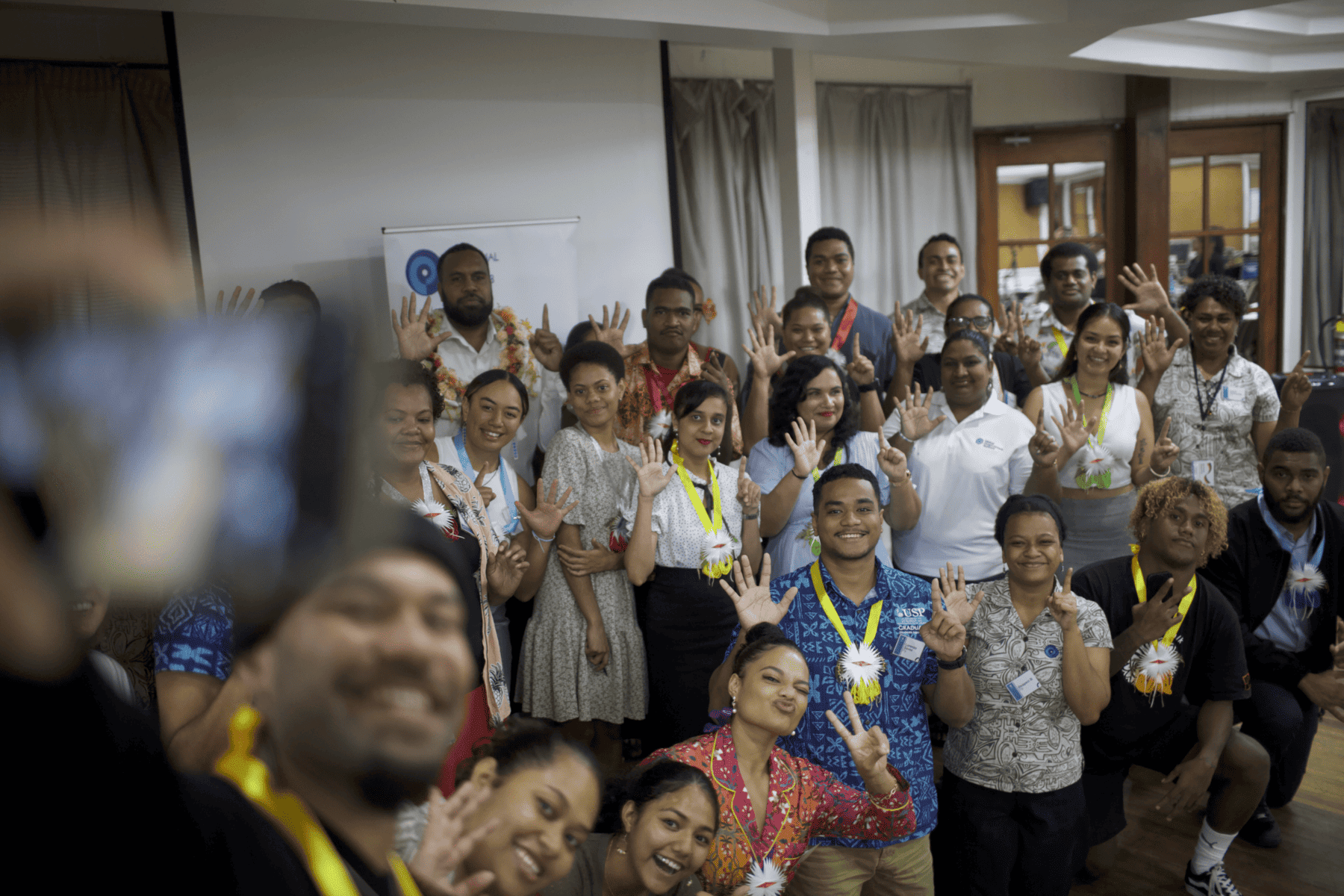Young climate activists and content creators from the Pacific are taking steps to harness the power of social media to further drive climate action in the region.
Twenty young people are in Suva for a week-long workshop hosted by the Regional Pacific NDC Hub.
Wasina Leonnie from Wagina Island in Solomon Islands is a content creator with over 20,000 followers on TikTok.
She is a descendant of i-Kiribati people who were taken from Kiribati to Wagina Island by the British in the 1960s, reportedly due to persistent droughts, although some in the community link their move to nuclear testing.
The 29-year-old recalled taking paddle boat trips as a child with her grandmother to a tiny island nearby called Te-tongo, where “we farm our seaweeds”.
“When I was seven years old, my grandmother and I lived on [Te-tongo] island for 3-4 months. I remember the island being big for me, but as I grew older and returned to it every year, I would notice that some houses are no longer there because of sea-level rise. It keeps damaging and destroying the homes of my relatives.
“For my grandmother’s house, we had to move as the beach moved. It keeps moving. So that’s when I noticed that there is climate change,” she said.
Leonnie hopes to use her platform to create more awareness so that “my people can continue living on the island”.
Desiree Fruean, 23, a Facebook content creator from Samoa, agrees it is “very evident that climate change is affecting our day-to-day activities.”
Fruean says through the workshop, “I have learnt about climate migration, how people tend to migrate to other countries. And as a result, we lose our cultures, our values, and our identity as people from the islands”.
Fruean noted: “For people that contribute the least amount [of carbon emissions], it’s not fair that we’re the ones that have to suffer the consequences. But it’s good to know that there’s a group of people coming together to do something about it. I mean, we may be small, but something is better than nothing.”
Terito Story, Project Coordinator with Climate Change Cook Islands, added: “[For the Cook Islands], we only contribute 0.00012% of the world’s global emissions. We’re still trying to do our part in climate mitigation. But what we’re focused on is adapting to these changes.”
She said the Cook Islands is still aiming to achieve a 100% renewable energy transition. It was a national target set for the year 2020.
Limited access to funding and technology for more remote island communities in the Cook Islands means “it was hard for us to reach the 100% target,” she said.
The reliance on boat transportation on islands mean there is an associated reliance on fossil fuels.
“We don’t have the technology to replace the use of fossil fuels. And we also don’t have the money to give them those things,” she said.
“It’s expensive, but we’re working towards it.”
Meanwhile, 30-year-old Jese Waqa, a Project Officer with iTaukei Women in Conservation, says her group has been supporting Fiji’s Nationally Determined Contributions (NDCs).
The group of marine and environmental science graduates from the University of the South Pacific, “work at the grassroots-level with the Indigenous people. While we’re working on reducing the impacts of climate change, we’re also building communities that are resilient.”
Waqa adds: “We have completed a project in Daku village in Tailevu, where we built nurseries for the villagers, which helps them have mangroves for their beachfront, and also planting their food source.”
The group is now looking to Vabea, a village on Ono Island in Kadavu. “It’s also a greenhouse project. We will [take] a variety of seedlings for them to plant.”
She says both villages face rising sea levels and “most of them can’t plant their food on their soil because of saltwater intrusion, which has affected their soils.”
